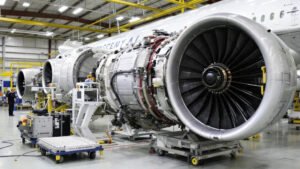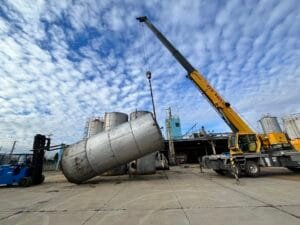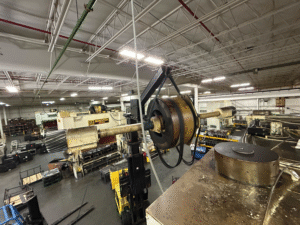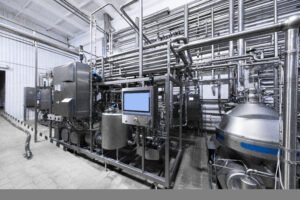In the world of heavy machinery and industrial equipment, unexpected situations can arise at any moment. From sudden breakdowns to urgent project needs, the need for emergency machinery moves is a reality that companies must be ready to face. Whether it’s relocating equipment within a site or transporting machinery to a new location, preparedness is key to ensuring these moves are executed safely, efficiently, and with minimal disruption. This comprehensive guide explores the importance of staying prepared for emergency machinery moves and offers valuable insights into the strategies, planning, and execution required to navigate these situations effectively.
Importance of Preparedness in Emergency Machinery Moves
Preparedness is crucial in emergency machinery moves to mitigate risks and minimize downtime. Adequate planning ensures swift responses to unforeseen challenges, safeguarding personnel and equipment. It fosters operational resilience, enabling timely execution of contingency measures and maintaining productivity amidst unexpected disruptions.
Understanding the Risks
Understanding the risks inherent in emergency machinery moves is paramount for effective preparedness. It involves identifying potential hazards such as equipment malfunction, logistical challenges, or safety issues. By assessing these risks comprehensively, organizations can develop robust contingency plans, allocate resources efficiently, and train personnel adequately. Awareness of potential disruptions allows for proactive measures to mitigate their impact, ensuring smoother transitions during emergencies. Through a thorough understanding of the risks involved, businesses can bolster their resilience and readiness, enhancing their ability to navigate unexpected situations with confidence and agility.
Equipment Malfunctions
Equipment malfunctions pose significant challenges during emergency machinery moves, potentially derailing operations and causing costly delays. Staying prepared involves thorough equipment maintenance and regular inspections to detect issues early. Establishing protocols for swift troubleshooting and repair can minimize downtime. Additionally, having backup equipment or contingency plans in place ensures continuity of operations in the event of a malfunction. Training personnel to swiftly identify and address malfunctions is essential, enhancing overall preparedness and resilience in the face of unexpected emergencies.
Natural Disasters
Natural disasters pose significant challenges to emergency machinery moves, demanding heightened preparedness. Hurricanes, earthquakes, or floods can disrupt operations, necessitating swift relocation of machinery to safer areas. Comprehensive risk assessments, contingency plans, and regular drills are imperative. Establishing communication protocols and collaboration with emergency services enhances response efficiency. Additionally, securing equipment, backup power sources, and essential supplies beforehand is vital. By prioritizing readiness and adaptability, businesses can minimize potential damages and ensure the safety of personnel during natural disasters, mitigating disruptions and facilitating a prompt return to normal operations.
Minimizing Downtime and Losses
Minimizing downtime and losses is paramount during emergency machinery moves. Efficient planning, clear communication, and access to necessary resources streamline operations. Implementing preventive maintenance schedules and conducting regular equipment inspections preempt potential failures. Swift response protocols and well-trained personnel enable quick problem resolution, reducing downtime. Additionally, having backup machinery or alternative solutions ready ensures continuity of operations. By prioritizing preparedness and proactive measures, organizations can mitigate losses, maintain productivity, and swiftly adapt to unforeseen circumstances, safeguarding their operations and minimizing financial impact.
Cost of Downtime
In the realm of emergency machinery moves, the cost of downtime looms large. Every minute of halted operations translates to revenue loss, customer dissatisfaction, and compromised deadlines. Delays amplify expenses, from overtime wages to rushed repairs. Moreover, prolonged downtime risks reputational damage and client trust erosion. Preparedness becomes paramount, as it slashes downtime duration, curtails financial losses, and preserves brand integrity. Swift, well-executed responses to unforeseen events not only mitigate immediate losses but also fortify resilience against future disruptions, underscoring the critical importance of proactive planning and readiness in navigating the unpredictable landscape of machinery emergencies.
Protecting Investments
Protecting investments is paramount in emergency machinery moves. Proper preparation safeguards costly machinery from damage, ensuring operational continuity and preserving financial resources. Implementing preventative measures and contingency plans mitigates risks, reducing potential losses due to unexpected events. By prioritizing asset protection, businesses safeguard their bottom line and maintain competitiveness. Additionally, investing in comprehensive insurance coverage can offer added financial security in the face of unforeseen circumstances. Ultimately, proactive measures to safeguard investments during emergency machinery moves are essential for long-term sustainability and profitability.

Strategies for Effective Emergency Machinery Moves
Effective emergency machinery moves demand proactive strategies. Prioritize regular training to equip personnel with necessary skills. Develop comprehensive contingency plans, including clear communication channels and designated roles. Maintain up-to-date equipment documentation and ensure access to essential resources. Swift decision-making and adaptable approaches are key in handling unforeseen challenges.
Developing an Emergency Response Plan
Developing an emergency response plan is vital for effective emergency machinery moves. This plan should outline procedures for assessing risks, mobilizing resources, and coordinating actions during crises. Incorporating training drills and regular reviews ensures readiness. By identifying potential hazards and establishing clear protocols, organizations can swiftly and efficiently respond to emergencies, minimizing damage and ensuring the safety of personnel and equipment.
Identifying Key Personnel
Identifying key personnel is paramount in effective emergency machinery moves. Designating individuals with expertise in equipment handling, logistics, and decision-making ensures a coordinated response. These personnel should possess clear communication skills and a thorough understanding of safety protocols. Their role is pivotal in orchestrating swift and efficient actions during emergencies, ultimately minimizing risks and optimizing the outcome of machinery relocation endeavors.
Establishing Communication Channels
Establishing communication channels is vital in effective emergency machinery moves. Clear lines of communication facilitate coordination among team members, enabling swift decision-making and action. Timely updates ensure everyone is informed, enhancing safety and efficiency during critical operations, minimizing potential disruptions and maximizing response effectiveness.
1. Designating key personnel responsible for communication.
2. Implementing redundant communication methods, such as radios and mobile phones.
3. Creating a communication hierarchy for clear dissemination of information.
4. Conducting regular drills to test communication systems.
5. Ensuring all team members understand emergency protocols and communication procedures.
6. Collaborating with external stakeholders, like emergency services and suppliers, to establish communication channels.
7. Providing training on using communication equipment effectively.
8. Developing contingency plans for communication failures.
9. Maintaining updated contact lists.
10. Reviewing and refining communication strategies based on lessons learned from past emergencies. Effective communication ensures swift coordination, enhancing safety and efficiency during machinery emergencies.
Conducting Regular Equipment Inspections
Regular equipment inspections are pivotal in effective emergency machinery moves. They preemptively identify potential issues, ensuring machinery readiness during crises. Thorough assessments enhance safety and reliability, enabling swift mobilization when emergencies strike. Consistent inspections optimize performance, minimizing downtime and ensuring seamless transitions during critical situations.
Inspection Checklists
Inspection checklists are vital tools in effective emergency machinery moves. They ensure thorough assessment of equipment readiness, identifying potential issues before relocation. By adhering to comprehensive checklists, teams can enhance safety, streamline processes, and mitigate risks, ultimately facilitating smooth and successful machinery transfers during emergencies.
Training Maintenance Teams
In the context of strategies for effective emergency machinery moves, training maintenance teams is paramount. Equipping them with comprehensive knowledge and hands-on experience ensures swift and precise action during crises. Regular training sessions enhance their ability to troubleshoot, assess risks, and execute emergency protocols efficiently. This proactive approach not only minimizes downtime but also safeguards personnel and assets. By investing in continuous training, organizations foster a culture of readiness, ensuring their teams are well-prepared to handle any unexpected challenges with confidence and competence.

Planning and Execution of Emergency Machinery Moves
Effective planning and execution are paramount in emergency machinery moves. Rigorous preparation involves assessing risks, identifying resources, and establishing protocols for swift response. Timely communication and coordination among stakeholders ensure smooth execution, minimizing disruptions and enhancing safety. Stay prepared for the unexpected by prioritizing meticulous planning and decisive action in emergency machinery moves.
Assessing Move Requirements
Assessing move requirements is integral to planning and executing emergency machinery moves. It involves evaluating equipment specifications, site logistics, and safety considerations. Understanding weight, dimensions, and special handling needs ensures proper resource allocation and risk mitigation. Thorough assessment facilitates smooth transitions, minimizing disruptions and enhancing overall operational efficiency during critical situations.
Site Accessibility
In the planning and execution of emergency machinery moves, site accessibility is paramount. Ensuring clear pathways and adequate space facilitates swift and safe relocation of equipment. Assessing potential obstacles and implementing contingency measures for restricted access areas enhance efficiency and minimize delays. Prioritizing site accessibility streamlines the process, enabling a more effective response to unforeseen circumstances and ensuring successful relocation operations.
Transport Logistics
Transport logistics play a pivotal role in planning and executing emergency machinery moves. It involves meticulous coordination of resources, routes, and schedules to ensure swift and safe relocation of equipment. Effective transport logistics minimize delays, optimize resources, and facilitate timely response to unforeseen challenges, ensuring successful outcomes.
Securing Necessary Permits and Clearances
In planning and executing emergency machinery moves, securing necessary permits and clearances is paramount. This process involves meticulous attention to regulatory requirements, ensuring legal compliance and operational safety. By obtaining the appropriate authorizations in advance, potential delays and complications are mitigated, facilitating smooth transitions and minimizing disruptions to operations during critical relocation processes.
Permit Requirements
Permit requirements are vital considerations in planning and executing emergency machinery moves. Compliance with legal and regulatory mandates ensures safety and minimizes liabilities. Understanding permit prerequisites, such as documentation and approvals, facilitates smooth transitions and prevents delays. Adherence to permit guidelines also mitigates risks of fines or legal consequences. Prioritizing permit acquisition in the planning phase is essential for seamless execution, maintaining operational integrity, and safeguarding against potential setbacks during emergency machinery relocations.
Environmental Considerations
Environmental considerations are paramount in planning and executing emergency machinery moves. Assessing factors like terrain, weather, and ecological impact helps mitigate potential harm to surroundings. Proper waste management and adherence to regulations ensure minimal environmental footprint. Prioritizing sustainability safeguards ecosystems and upholds corporate responsibility, contributing to long-term environmental preservation.
Implementing Safety Protocols
Implementing safety protocols is paramount in the planning and execution of emergency machinery moves. Prioritizing safety measures reduces the risk of accidents and injuries, protecting both personnel and equipment. This includes thorough risk assessments, proper training, and adherence to industry standards. Rigorous safety protocols ensure smooth operations and promote a culture of safety consciousness within the team.
Personnel Training and Briefings
Personnel training and briefings are pivotal in the planning and execution of emergency machinery moves. Comprehensive training equips employees with the necessary skills to respond effectively during crises. Regular briefings reinforce protocols, enhancing coordination and communication among team members. This ensures everyone understands their roles and responsibilities, promoting smooth execution and minimizing risks during emergency situations.
Protective Gear and Equipment
In the planning and execution of emergency machinery moves, the utilization of protective gear and equipment is paramount. Ensuring that personnel have access to appropriate safety gear such as helmets, gloves, and protective clothing enhances their ability to work effectively while minimizing the risk of injury. Additionally, using specialized equipment designed for safe handling and transport further safeguards both personnel and machinery during emergency relocation procedures.
Conclusion
Emergency machinery moves are a reality that industries must be prepared to face. By understanding the risks, developing comprehensive plans, and executing moves with precision, companies can minimize downtime, protect their investments, and ensure the safety of personnel and assets. Staying proactive with regular inspections, training programs, and communication protocols strengthens the overall preparedness for any unforeseen eventuality. With a strategic approach to emergency machinery moves, organizations can navigate challenges with confidence and resilience.



















